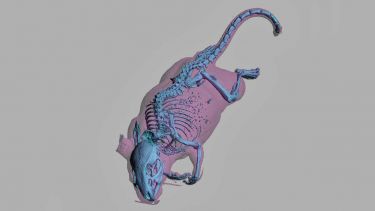Join our VMHTsOP Project!
We have four research positions available at the Insigneo Institute to join the “Virtual Mouse and Human Twins for optimising Treatments for Osteoporosis (VMHTsOP)” project!
The VMHTsOP project aims at developing the first inter-species Virtual Mouse-Human Twin for predicting bone adaptation over time and optimising biomechanical and/or pharmacological treatments for Osteoporosis. It is a 5-year project that will start in September 2024, led by Prof Enrico Dall’Ara at the University of Sheffield's School of Medicine and Population Health and Insigneo Institute. The project has been selected by ERC-consolidator grant and funded by the EPSRC through the EU Guarantee fund.
Don’t miss the opportunity to join the team for this exciting research project!
Current Available Positions:
- Research Associate (PostDoc) in Preclinical musculoskeletal imaging and biomechanics; 3yrs; start in September 2024; closing date: 4 June 2024
- Research Associate (PostDoc) in Computational musculoskeletal biomechanics; 3yrs; start in September 2024; closing date:4 June 2024
- Research Technician with expertise in imaging and histology; 3yrs; start in September 2024; closing date: 4 June 2024
- PhD student in A biochemo-mechano multi-scale computational model to predict bone adaptation over space and time; salary and fees (for UK students) for 3.5yrs; start in October 2024; closing date: 10 June 2024
For any enquiries, please contact Professor Enrico Dall’Ara at e.dallara@sheffield.ac.uk
Summary of the project
Eighty per cent of pharmaceutical interventions fail in patients even after being successful in animal studies. Musculoskeletal (MSK) diseases such as osteoporosis (OP) reduce dramatically the quality of life of millions of affected patients. Mice are the most common animal model to test new treatments. Nevertheless, the extrapolation of their effect on patients and identifying which new treatments should be tested in clinical studies is based on simple scaling approaches.
In this project we will develop a new mechanistic computational framework that bridges between mouse and human, informed by in vivo experiments in mice, to discover optimal treatments in patients. We will create two parallel virtual mouse and human twins (VMHTs-OP), based on similar inputs (biomedical images, cell data, gait data) that will predict bone adaptation in function of biomechanical and/or biochemical stimuli. Each virtual twin will be based on advanced multi-scale computational models (multi-body dynamics, finite element and cell-population models) to predict bone adaptation over time and space due to OP and to new biomechanical and pharmacological treatments, identifying in silico the new combined treatments that are likely to be effective in patients, to be tested in future clinical trials.
The models will be going through a comprehensive verification, validation and uncertainties quantification process in order to provide the required credibility for future preclinical applications. The model predictions will be validated against longitudinal mouse experiments and available longitudinal clinical data from known biomechanical or pharmacological interventions. Finally, the validated framework will be used to test in silico several combinations of treatment regimens (overlap, intermitted, drug holidays) and different interventions (microgravity, high strain exercises) that would not be ethically nor economically testable in animal and clinical trials.




